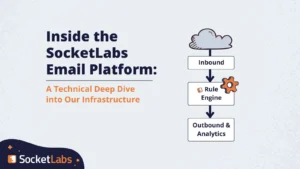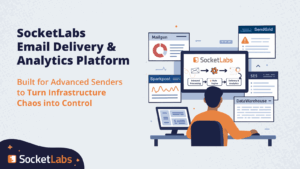Please welcome Chad S. White!
Chad S. White is the Head of Research at Oracle Marketing Consulting, a global digital marketing agency. He is also the author of 4 editions of “Email Marketing Rules” and nearly 4,000 posts and articles about digital marketing. Chad is the ANA’s 2018 Email Marketer Thought Leader of the Year.
You probably know Chad. He’s a huge force in the email industry and has a leader’s voice in the big discussions we have in the email community. He’s the true definition of a thought leader and his view on the next couple years of email are not to be missed. Why? Well, because he knows exactly what he’s talking about.
How do you see email fitting into the marketing mix in 2025?
Email marketing’s place in the marketing mix is very secure. What will change is how email marketing interacts with other channels.
Behind the scenes, data and insights from email marketing will inform messaging and targeting in other channels and vice versa. And in creating customer experiences, email will be used in tighter coordination and orchestration with other channels to create a critical mass around messages and drive action in particular channels.
While brands will still need email marketing specialists with deep expertise, they’ll need those specialists to have a broader appreciation of how other channels work and of holistic customer experience goals. Interdepartmental communication and collaboration soft skills will be valued, along with omnichannel analytical hard skills. In this new ecosystem, email marketers will have even more opportunities to ascend the marketing ladder to greater opportunities.
What about email do you see as a nice-to-have for now, but feel will be considered table stakes by 2025?
Today, Brand Indicators for Message Identification (BIMI) and customer data platforms (CDPs) are nice-to-haves, but they’ll become essential for most large brands over the next two years.
For BIMI, the big change is support by Apple. While this was announced in 2022, the impact has been largely unfelt because Apple’s support of BIMI comes with additional requirements for mail providers like Gmail and Yahoo, which make up the majority of email accounts used by Apple Mail users. The good news is those two mailbox providers have indicated they’ll be making those required changes.
When those requirements are met, marketers who adopt BIMI can expect their logo to appear with more than 90% of the emails they send on average. That’s up from the roughly 33% of emails that appear with BIMI support as of this spring.
While implementing BIMI requires several time-intensive steps, and some significant costs, the effort is more than worth it now for many businesses, especially enterprises and other large organizations. The mainstreaming of BIMI may, in time, also coax others like Microsoft to support it, allowing it to reach near universal support.
For CDPs, the sunsetting of third-party cookies, launch of Apple’s Mail Privacy Protection and App Tracking Transparency, and growing imperative to create more cohesive omnichannel experiences have heightened the need of brands to utilize their cross-channel customer data to make key marketing and operations decisions. CDPs solve this problem by aggregating all customer data in one central repository.
With CDPs in place, brands can finally treat their customers like the omnichannel beings they’ve been for well over a decade. For email marketing, this will lead to more relevant personalization, better segmentation, and smarter automation that leverages a wider array of triggers across channels. CDPs will unlock many machine learning and AI opportunities.
What do you hope or wish to see change within email by 2025?
I hope email marketers place less emphasis on campaign-centric metrics and more on customer- and subscriber-centric metrics. Too many marketers are still trying to maximize campaign performance when they should be trying to maximize the performance of their audience. That shift entails:
- Adopting more sophisticated audience targeting, including smart segmentation, fatigue analysis, and propensity models
- Understanding how non-promotional campaigns and calls-to-action impact customer value later
- Creating more cohesive and compelling campaigns across channels
As the email marketing channel de-silos and omnichannel marketing becomes dominant, those shifts should become easier and more urgent for brands to make.
I’d also love to see the CAN-SPAM Act of 2003 replaced by a modern anti-spam and privacy law. In addition to reducing global spam by up to 8%, such a law would set email marketing expectations for brands much more in line with consumer expectations, reducing a lot of pain and suffering for brands that foolishly think merely following the law guarantees their access to inboxes.
However, with Congress narrowly divided and almost hopelessly gridlocked, plus a presidential election in 2024, getting modern anti-spam and privacy legislation passed seems highly unlikely. Hey, but a person can dream, right?








